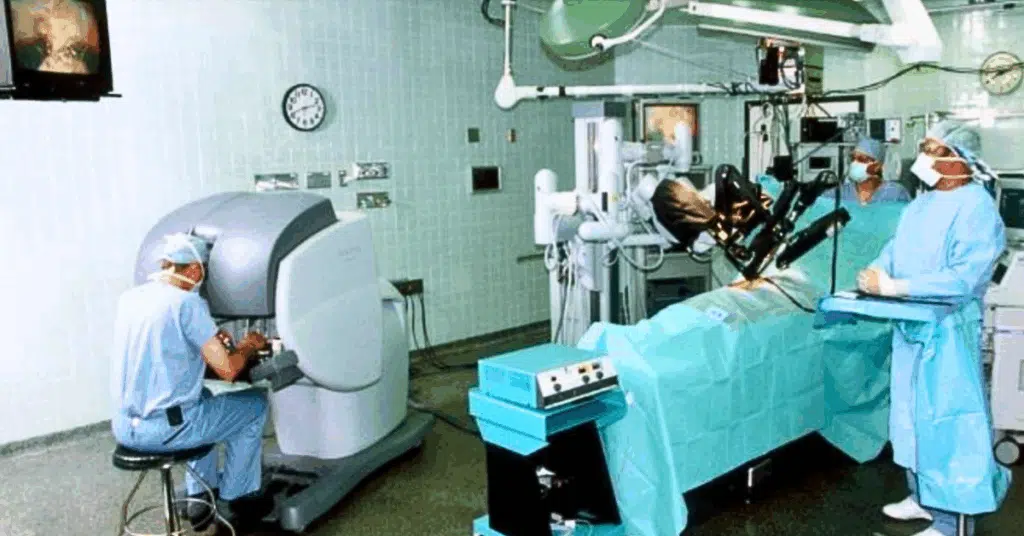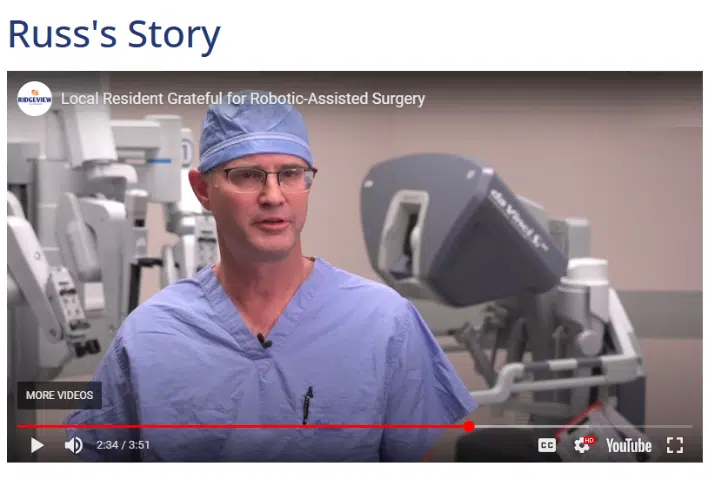In medicine, something we can all expect is change. Surgical care is no different than other specialties and the most recent significant change within the surgical community is the utilization of robotics. At Lakeview Clinic, we have several of our surgeons who are trained robotically and have been community leaders in the advancement of robotic surgery using the daVinci Surgical System.
Advantages of Robotic Surgery
Robotic surgical procedures are minimally invasive procedures that have resulted from the advancement of well accepted laparoscopic procedures. The major advantage of using robotics rather than standard laparoscopic procedures is the ability of robotic techniques to simplify fine movements and stabilize the surgeon’s implementation of certain maneuvers. This results in the simplification of standard laparoscopic procedures and improving techniques allowing completion of more complex surgical procedures, previously requiring larger “open” surgical incisions.
How Robotics are Used During Surgery
Robotic surgical procedures still require significant surgeon involvement, as all the technical aspects of the procedure involve human input. This begins with the placement of abdominal cannulas (tubes) which are used to introduce instruments into the abdomen. There will be 3 or 4 cannulas placed through incisions as small as 8 millimeters (about 1/3 of an inch). Through the cannulas, a high-definition video camera and robotic instruments are placed into the abdomen, and the robot is docked to the cannulas. Once the robot is docked, the surgeon sits at the console within the operating room and views images from the high-definition video camera. Using a combination of hand and foot controls, the significant components of the surgical procedure are completed using the robot.

Who Performs Robotic Assisted Surgery?
At Lakeview Clinic, both our general surgeons and gynecologic surgeons perform robotic surgical procedures routinely. The most common procedures include abdominal wall hernia repair, gallbladder removal, hiatal hernia repair, hysterectomy, intestinal resections (particularly colon resections), and ovary and fallopian tube procedures. Many other less common procedures may also be performed using the robotic platform.
The Benefits
The minimally invasive techniques of robotic surgery result in decreased postoperative pain, shorter recovery times, reduced blood loss, shorter hospital stays, shorter operative times and a decrease in certain short-term and long-term postoperative complications. You can read or view a patient’s first-hand account on Ridgeview Foundation’s website. In Russ’s Story he talks about how well he felt post-surgery.

It is important to remember that not all surgical procedures are best performed using robotic techniques for a variety of reasons. Your surgeon can discuss whether a robotic approach is appropriate for you.
.

Todd Elftmann, MD
Dr. Elftmann joined Lakeview Clinic as a general surgeon in 1995. He has received additional training for complex robotic surgical cases including colon, gastric, as well as hiatal and abdominal wall hernia procedures. Dr. Elftmann has also been recognized as a Minnesota Monthly Top Doctor of General Surgery
